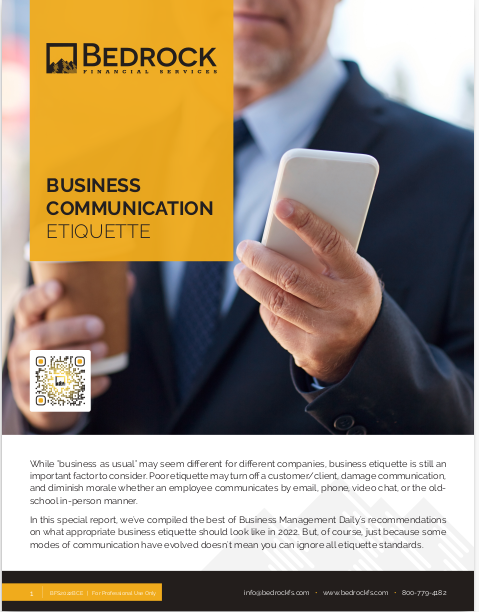Key Takeaways
-
Clients ghosting after renewal is more common than you think, and it’s not always about dissatisfaction. Your follow-up strategy needs to be proactive, not reactive.
-
A structured communication system, set timelines, and value-driven touchpoints are essential to keeping relationships alive long after the paperwork is done.
Why Clients Disappear After Renewal
You help them renew. The policy is in place. You send a thank-you message—and then? Silence. The client who once replied within the hour now vanishes without a trace. This scenario is familiar to many independent insurance agents, and the silence can feel both confusing and personal. But here’s the truth: ghosting after renewal rarely stems from malice.
In 2025, client behaviors are shaped by digital fatigue, shorter attention spans, and a flood of communication. Once the urgent need—policy renewal—is fulfilled, many clients naturally deprioritize contact. But just because you’re out of sight doesn’t mean you need to be out of mind.
The Post-Renewal Drop-Off Isn’t the End
It’s easy to assume a client who ghosts isn’t interested in staying connected. That assumption costs agents thousands in missed renewals, upsells, and referrals. The post-renewal period is actually when your next relationship-building phase begins.
You need a system that ensures your client interactions don’t end when the signature dries. This system isn’t about chasing. It’s about staying relevant.
What You Should Do in the First 30 Days
The first month after a renewal is your golden window. Here’s what should be happening:
Week 1: Confirm and Appreciate
-
Send a brief but professional confirmation email recapping the renewed coverage.
-
Thank them for their continued trust. Reinforce that you’re available for any questions that arise.
-
Include an easy-to-scan summary PDF or visual snapshot of their current policy.
Week 2: Educational Touchpoint
-
Share an article or short update about a topic relevant to their coverage (e.g., life stage changes, seasonal risks).
-
This isn’t a sales pitch. It’s positioning yourself as a resource.
Week 3: Contact Check-In
-
Ask if their contact details, dependents, or financial goals have changed.
-
Offer to schedule a quick policy review if anything feels different.
Week 4: Add Value Without Asking
-
Send a checklist or tool they might find useful (e.g., a tax season worksheet or annual financial planner).
-
Keep it framed around helpfulness, not your business goals.
What You Should Stop Doing
Many agents unintentionally push clients away in their attempt to re-engage. Here’s what to avoid:
-
Stop over-messaging: Daily texts, calls, or emails can feel intrusive.
-
Don’t make it about you: Avoid phrases like “Just checking in to see if you need anything from me.”
-
Don’t assume silence is rejection: Ghosting is often a sign of being busy, not being done.
Re-Engagement After 60 Days of Silence
If 60 days have passed without contact, it’s time for a strategic nudge:
-
Send a personalized email with a subject line like: “Let’s make sure you’re still covered confidently.”
-
Mention any upcoming industry changes that might affect them.
-
Offer a policy snapshot update to highlight how their plan still aligns with their current life situation.
Avoid guilt-tripping or passive-aggressive tones. Instead, act as though you’re doing them a favor by staying on top of their financial safety net.
Use Technology, But Don’t Automate the Relationship
It’s tempting to schedule a year’s worth of follow-ups and automate them through a CRM. In 2025, that feels like noise to most clients. The solution? Use technology to assist you—not replace you.
-
Use automation for consistency (e.g., reminders, calendar nudges).
-
Personalize every touchpoint with details specific to the client: names, timelines, family events, or location.
-
Avoid generic subject lines or templates that look like mass emails.
Your edge as an independent agent is the relationship, not just the product. Tech supports that—it shouldn’t replace it.
What to Say When You Finally Reach Them
When a client who’s ghosted finally responds, your job is to reset the tone—not demand an explanation.
You might say:
“I’m glad to hear from you! I know things get busy after renewal, and I wanted to make sure your plan is still aligned with your goals for the year. If anything’s changed, I’m here.”
That one line says: I noticed, I care, but I’m not making this uncomfortable.
Keep it short. No long-winded updates. No defenses. Just clarity and professionalism.
Build a Post-Renewal Calendar You Can Stick To
Many agents fail to follow up because they don’t have a structure. Here’s a sample annual follow-up schedule:
-
30 days post-renewal: Educational or lifestyle-based check-in.
-
90 days post-renewal: Invite to reassess any life or financial changes.
-
6-month mark: Offer a mid-year policy snapshot or benefits reminder.
-
9-month mark: Provide value with a tool, resource, or life event guide.
-
Renewal prep (60 days before next cycle): Start preparing for the next term.
This isn’t about chasing. It’s about staying visible, predictable, and dependable.
Set Communication Expectations Early
Ghosting often happens because clients aren’t sure what to expect from you after the renewal. Fix that in advance.
-
During renewal: Let clients know you’ll check in with value-based updates a few times throughout the year.
-
Use language that makes it about them: “I’ll send you a few things throughout the year that could be helpful based on your coverage and goals.”
-
Ask their preferred communication method and timing: Email, text, call? Monthly? Quarterly?
By establishing this rhythm early, silence becomes less likely later.
Bring Clients Back into Conversation Gently
If someone hasn’t replied in months, a re-introduction email works better than another standard check-in. Use a structure like:
-
Subject: “Let’s Reconnect—Your Policy Still Matters”
-
Body:
-
Quick recap of when you last spoke
-
Mention anything relevant that’s changed in the industry
-
Reassure them you’re still here to support their goals
-
Offer a no-commitment review or Q&A call
-
You’re not dragging them back. You’re holding the door open.
When to Let Go—And Why That’s Okay
Not every client will return, and that’s okay. In fact, 2025 is the year to focus more on quality than quantity. You want relationships that are two-way. If you’ve tried structured follow-up over 6 to 12 months with no response, it’s healthy to archive that file and shift your attention.
Your energy is better spent on current clients and referrals from the people who do respond.
Rebuilding Trust Through Systems
If ghosting has happened more than a few times this year, it’s not just a client problem—it’s a system problem. Evaluate:
-
Are you too quiet after renewal?
-
Are you adding real value—or just staying in touch?
-
Are your messages tailored, or do they feel templated?
-
Do clients know what to expect next?
An internal audit of your follow-up systems can often reveal gaps. Plug those gaps with a repeatable calendar, personalized content, and consistent outreach.
Keep Relationships Alive—Even After the Silence
Clients ghost for many reasons—but your silence after theirs is what makes it permanent. Every renewal is the start of another cycle, not the end of one. Stay relevant, stay helpful, and stay human.
At Bedrock Financial Services, we support independent agents like you with proven client engagement strategies, marketing automation that still feels personal, and training to help you retain more business without chasing it. If you’re ready to stop losing clients after the sale, sign up with us—we’ll show you what a real retention system looks like.







